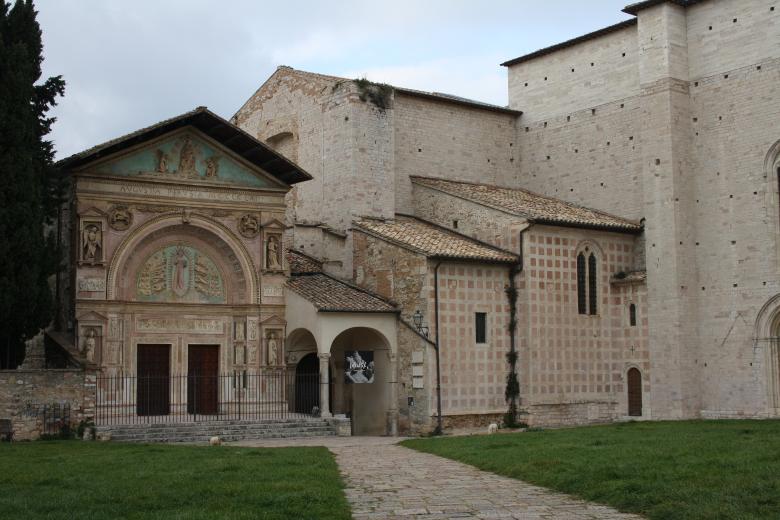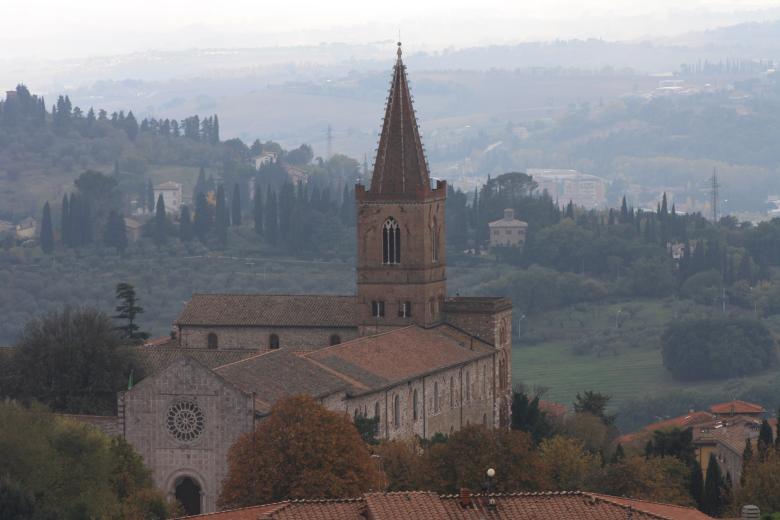Porta Marzia
Die Porta Marzia, ein antikes etruskisches Tor, ist als Blindbogen in das Mauerwerk der Rocca Paolina eingefügt, einem majestätischen architektonischen Werk aus dem 16. Jahrhundert, das sich über die weite Umgebung des Hügels Landone erstreckt, auf dem Perugia liegt.
Jahrhundert, das sich über die weite Umgebung des Landone-Hügels erstreckt, auf dem Perugia liegt. Es handelt sich um das monumentale Tor am südlichen Ende der etruskischen Mauern, wo die Via Amerina einmündete, die um die Mitte des dritten Jahrhunderts v. Chr. in Richtung Perugia verlängert worden war, um die Beziehungen zur Stadt und zu Rom zu stärken.
Diese architektonische Lösung wurde von dem großen Architekten Antonio da Sangallo dem Jüngeren verwirklicht, der ein Monument von unvergleichlichem historischem und archäologischem Wert bewahrte, indem er den Travertingiebel in den Backstein der Festung einfügte und ihn zu einem dekorativen Element am Eingang der Festung machte.

































